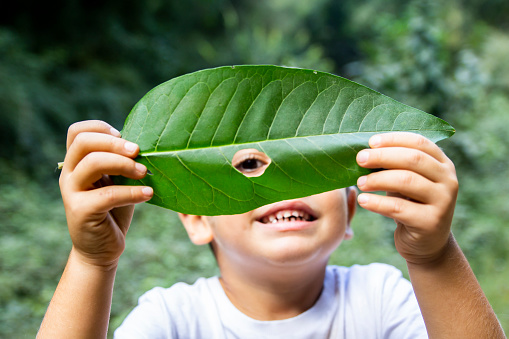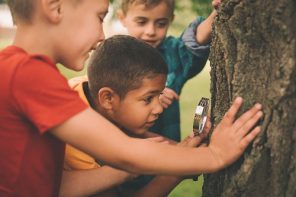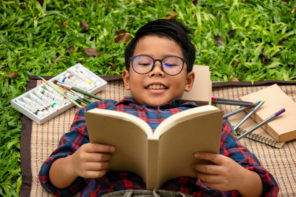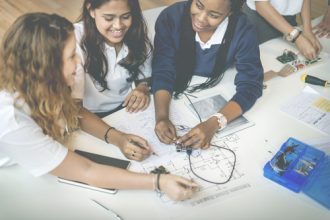When you were a child, did you have a special place outdoors that you would call your own? A small creek, a magical backyard, an expansive field or a special undeveloped lot? These spaces were familiar to many of us in our youth and no doubt led to exciting and educational adventures in our minds and hearts.
Many children today, for a variety of reasons, don’t have access to amazing spaces like those, but educators and families around the globe are making it a priority to bring nature back into the daily lives of young children.
Why Nature?
As children spend more time in front of screens, having focused time to connect with their physical environment becomes more and more important. Nature provides variety, space and opportunities that are unique to your community.
A growing body of research demonstrates that nature-based learning can help children develop empathy and experience academic success. Recent studies have shown that spending time outdoors fosters cognitive, social and self-regulation skills—and can improve mental health for children and adults.
Nature-based learning offers children an opportunity to learn about their world, their peers and themselves through interactions with natural materials. Nature-based learning occurs primarily outdoors, but there are wonderful ways to continue to extend this learning inside.
Exploring and experiencing the wonders of nature can happen anywhere!
How can I get started?
First, by getting your child prepared for the climate where you live. Finding the appropriate gear to help your child be safe and comfortable while exploring is key. It is important to have the proper gear, especially for rain, cold, wind and sun. Nobody wants their little explorer to get sunburnt!
Once you’re all geared up, support your child in learning to navigate the area through frequent visits. There are lots of resources online, but your child’s teachers or a local outerwear store can also be a big help in coming up with ideas for expeditions.
Give it a try! Gather some outdoor gear for yourself and splash in some puddles, make a snow angel or even a snow fort or catch some lizards in the desert. By sharing these experiences with your child, you will be investing in their education and in your relationship while helping them build a meaningful bond with the natural world.
Here is a nature activity you can do in almost any environment.
Bird Watching Walk
Materials and Equipment:
- Field guides (available at your local library) or photos of local birds, their nests and information about where they nest
- Binoculars if the children are old enough to successfully use them
- Apps of bird calls or YouTube videos of bird calls (optional)
- Camera (optional)
Most places where humans live, birds can live too. You can enjoy this activity in a busy city or any wild spaces, watching pigeons, sea gulls, crows and more. Sometimes birds can be hard to find, so take your time and follow your child’s lead if they find something else to investigate outdoors. You can also enjoy a walk by yourself earlier to scout out some fun birding spots.
While walking, ask questions to help children think about and discuss what behaviors are likely to make it easier to spot birds (e.g., walking quietly, watching carefully) and less likely (e.g., running towards birds, shouting, looking at the ground instead of in trees or on telephone poles).
What your child will learn
- To be engaged in nature through supported discovery
- Knowledge about local birds and their habitats
- Improved observation and focusing skills
Afterwards, you can document your experience and start creating a book of bird photos that have been sighted in your area! You and your child can add to it as you discover and photograph more birds.
Sheila Williams Ridge and Julie Powers are the co-authors of Nature-Based Learning for Young Children: Anytime, Anywhere on Any Budget. Sheila is the Director of the Shirley G. Moore Laboratory School at the University of Minnesota and Julie is an Associate Professor in Early Childhood Education at the University of Hawaii, Maui College.





